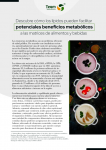Dow: High oleic canola will hold its own against next generation soy

Commercial leader for oils David Dzisiak was speaking to FoodNavigator-USA at the IFT show last week after scoring an industry first with the launch of a sunflower oil containing zero trans fat and so little saturated fat that firms using it could make ‘saturated fat free’ claims.
Asked how high oleic canola compared with the much-hyped next generation of high oleic soybean oils about to hit the market, Dzisiak was upbeat.
“The market opportunity [for naturally stable oils] is huge. It won’t be a case of the winner takes it all.”
Price differential
While soybean industry initiative Qualisoy has predicted that high oleic soybeans will ultimately be cheaper than high oleic canola, the infrastructure around Canadian canola oil production with its segregated storage facilities and smaller crushing facilities meant it was more cost effective to produce than high oleic soy, argued Dzisiak.
“Soybean crushing facilities are very big; it’s not as easy to do short runs [for specialized products]. Low linolenic soybean oil was not a big success, in part because it was so expensive to get identity preservation in the supply chain.”
Meanwhile, the fact that Dow’s canola and sunflower products were not produced with biotech - unlike the next generation of healthier soybean oils - would count in its favor with some customers, he predicted.
He also rejected suggestions that demand for high oleic canola significantly outstripped supply, adding: “Demand does exceed supply, but the acreage of canola grown in North America has increased by 50 percent in the past four years and crush capacity has doubled in the past two years.”
Cargill: If customers are happy with high oleic canola, why would they switch to soy?
Cargill, which launched its Clear Valley 80 high oleic canola oil at the IFT show, said canola players had a clear advantage in being first to market.
If customers were happy with healthier canola oils, high oleic soy would need to be significantly better for them to switch, development chemist Guang Wang told FoodNavigator-USA.com.
Saturated fat free sunflower oil
Dow’s new ultra-low sat fat sunflower oil has been developed using advanced crop breeding techniques to produce ultra high levels of oleic acid - a monounsaturated fatty acid - and is naturally stable.
It could also help firms clean up labels by removing antioxidants or preservatives such as TBHQ, said Dzisiak.
Consumer tests on the omega-9 sunflower oil, which has just over 3 percent saturates, 92 percent monounsaturates and 4 percent polyunsaturates, had shown it achieved similar scores to canola, soybean and corn oil when used to stir-fry green beans, said Dzisiak.
“We’ll start product sampling this fall. When combined with small quantities of hard fat stocks it could also help manufacturers of baked goods make big reductions in saturated fat.”
Dow, which has also developed high-oleic canola oils and bakery shortenings, is confident sales volumes of its omega-9 oils will triple in the next two-to-three years as manufacturers making everything from breakfast cereal to microwave popcorn try to cut saturated fat.















